In last week’s corporate conference for investors, Disney exec Tom Staggs revealed that part of the $1 billion “NextGen” project will be the ability to make ride, show, and character-interaction reservations from home (and, one presumes, from handheld devices and phones as well, once at the resort). This is a dramatic evolution of the FastPass concept, and the more you think about it, the more revolutionary it becomes. If implemented a certain way, in fact, it has the potential to change just about everything about a Disney vacation—and it could mean disaster for many guests. This is being recognized on many fan sites already.
What’s being given less attention is the possibility that a *different* implementation might keep things relatively the same, and—dare we hope it?—a yet third implementation might actually improve the experience for everyone. It’s an amazingly tricky balancing act, though, and a lot can go wrong.
|
|
 |
Staggs pointed out that NextGen will allow for personalized character interactions, presumably through RFID technology embedded in the ticket media. That will be plenty magical—as if kids aren’t already over the moon enough just in meeting their favorite princesses. Bravo here. Ditto the ability and will to deploy entertainment where it is most needed. Have you ever played Roller Coaster Tycoon? This computer game lets you have a sky-level view of a theme park you design, build, and run, and it even prompts you to drop more entertainers into areas where visitors are bored. In real life, no theme park does this—but Disney will soon have that level of reactivity to the situation. And that’s a good thing, too.
He even laid out the problem statements Disney is wrestling with: “We know that our guests love creating great memories. We also know they don't exactly relish waiting in line, checking in at the resort, worrying about missing their favorite attractions, or feeling uncertain about how to best navigate and access our properties.” As chief of the parks division, Staggs would certainly know of the top complaints. And they aren’t surprising complaints; the lines and fear of missing a top attraction were also the top complaints at Disneyland when I worked there twenty years ago—long before even FastPass.
Although Staggs didn’t mention it, they are fighting yet another problem with rides and lines: the changing expectations and attention spans of the visiting population. Lines in the 1950s were boring and bare, and over time, Disney developed “themed queues” to keep things interesting while patrons waited (and maybe to tell Act 1 of the story in the process). But FastPass played to people’s natural impatience, and many are now unwilling to stand in lines.
The proliferation of smartphones has accelerated the indifference toward themed queues. Have you ever witnessed how most people stand in themed queues now? Their heads are bent over and they are deeply involved with their phones. Even if there is no cell phone coverage, they use the devices to play games. How is Disney supposed to compete with that? One answer is not to compete with it—going to a fully virtual queue would eliminate the problem (and save money by not having to build grandiose queues any more). In other words, expand the FastPass concept so that it can be done earlier, and from home. FastPass for your whole vacation. FastPass on steroids.
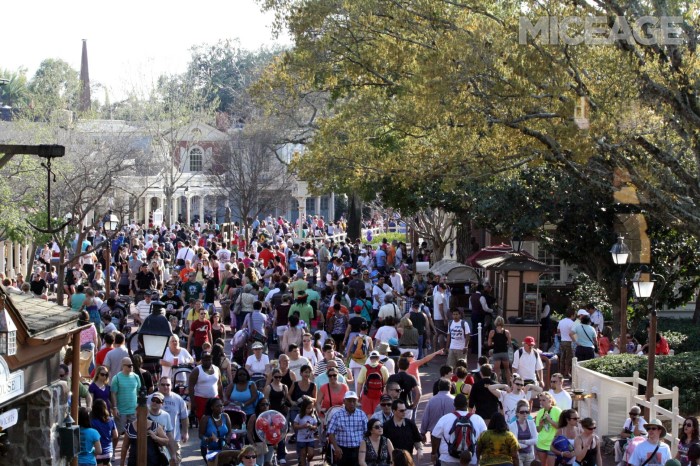
If everyone’s in a virtual queue, does that mean everyone is on the walkway?
So how might this “Advance FastPass” (AFP) work? Obviously, we got no details from Staggs, so there is only speculation for the moment. But we’re not working in the dark entirely; due to the competition and some Disney surveys, we can make informed speculations. By the competition, I mean Universal. They tried a free ride reservation system, too (after Disney rolled theirs out), and ended up taking “Universal Express” to a paid service. It costs $25 or more to get to skip the lines. Unless, of course, you are staying at a Universal hotel, in which case the perk is free. Occupancy rates, of course, skyrocketed. For Universal, this was a win-win. They filled hotels, and some guests got to skip the lines. Because of their attendance numbers and the smallish amount of hotel rooms, the overall effect is not significant on the rest of the paying population.
If Disney tried to give away an Unlimited FastPass to every hotel visitor, the rides would be overrun, and you’d have five-hour Standby waits for Space Mountain. But you could see why Disney might want to steal at least a page from Universal’s book, and incentivize the on-property hotel stay. Would it make sense to offer some Advance FastPasses if you stayed at a Disney hotel? Could it be viewed as reasonable to most guests if you get more AFPs if you stay at a more expensive hotel? Indeed, Disney was asking questions like this on surveys within the past year. So it’s possible—perhaps even likely—that we will see a tiered system for AFP. The big question mark is whether those who stay off-property (or live locally) will get “few” AFPs or get “zero.” That’s a big difference; perhaps all the difference in the world.
Let’s cycle back to the general concept: ride reservation from home. From some fans, the first reaction is ecstasy. These are folks who likely plan heavily in the parks anyway – the Clark W. Griswolds of the Disney fan universe. But there are other fans who decry the death of spontaneity. Call it “spontaneous combustion”: no more will you be able to decide at a moment’s whim to ride Splash Mountain next. This would have to have been planned months earlier—and who can say twenty-three weeks in advance whether Big Thunder or Splash Mountain is a better fit at 3:30pm? What if it’s raining, and you wish you’d opted for the indoor Space Mountain instead?
It’s easy to get lost in the weeds in this discussion, because there are multiple variables. One variable is the type of visitor. People who are heavy planners may not comprehend the fear of those who prefer spontaneity, and vice versa. You’ve also got locals and frequent visitors who may not need to book Disney hotel rooms. The other big variable is just what the implementation looks like. If the AFP system is run more like the restaurant reservations than today’s FP system (meaning that every available “slot” is filled and there is no room for walkups), that will have dramatic effects on each of the types of audiences. So let’s take this one step at a time.
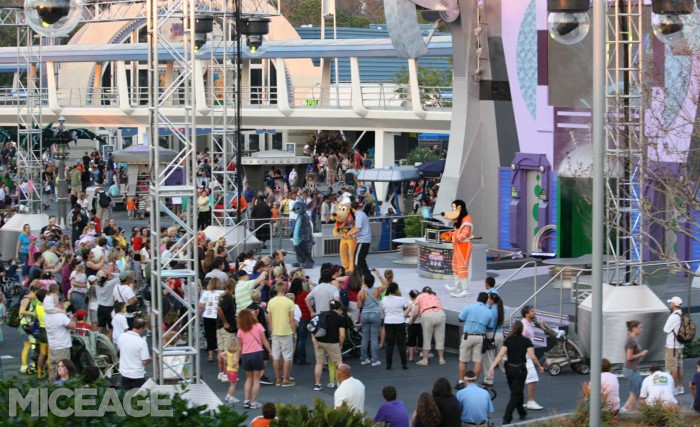
Club 626 show.
Scenario #1
In Scenario #1, let’s assume that AFP works like restaurant reservations. Have you tried to show up at a sit-down restaurant since the advent of the Disney Dining Plan (DDP)? You almost always can’t get in. And forget about it for the standout stars like Le Cellier and California Grill. People set alarm clocks so they can wake up at just the right moment when the reservation window opens up, 180 days out, in an effort to score those coveted reservations. Will it be like that for Toy Story Mania? In the case of the restaurants, they are scheduling *all* of the tables and not leaving room for walk-ups. Put in the context of the rides, that would mean taking the current mix of FP and standby and making everything FastPass. Let’s assume that Space Mountain serves 2,000 guests per hour. If the mix ratio is 70% FastPass and 30% walkup now, that’s 1,400 people in FastPass. Would those 1,400 be bumped up to the full 2,000 in the world of AFP? Before you say they would never do that, consider that they DID do that for the sit-down restaurants. It could happen.
Some locals have been saying that in such a world, there would literally be no reason to visit the parks any more, and certainly not a reason to have an annual pass. With restaurants completely full and E-ticket rides inaccessible, your choices would be to frequent the non-FP rides or shop. If they did allow for a small mix of Standby people but kept the ratio small (say, 5% or 10%), the Standby lines would be prohibitively long. The winners in such a scenario would be the ultra-planners and those staying at Disney hotels. The losers would include those staying off-site (assuming AFP was tiered to favor those on property) and locals who live nearby. But forget locals—the group most likely to be ticked off would be those who came from afar and paid full-fare for their tickets, but aren’t staying on property and thus weren’t told by Disney reservation agents to book ahead of time (anyone staying at a Disney hotel would likely be told upon check-in to make reservations for this week, even though it’s late in the game). Probably Disney can’t afford to antagonize this important group of “non-planners” (or perhaps the better description is “mild planners”), and that makes Scenario #1 not that likely.
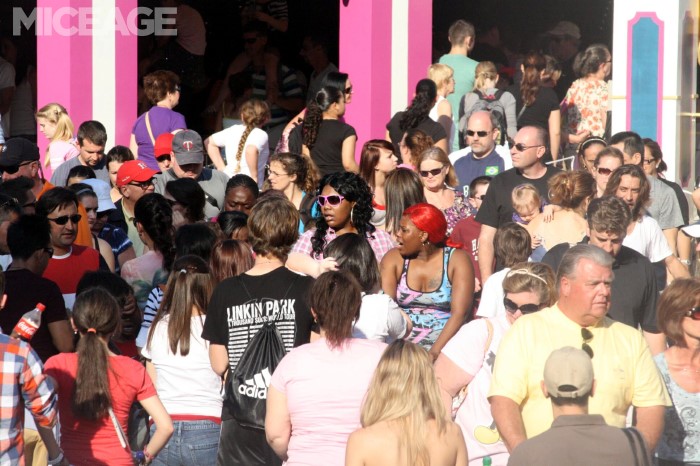
Near Small World on President’s Weekend—this is not crowding
related to a parade; it’s just this way over here.
Scenario #2
The second idea posits keeping the SAME mix of FastPass and Standby that is now in use at the parks. If Space Mountain uses the numbers above, that means staying at 1,400 users for FP and AFP, and 600 users per hour in Standby. Note that there is still a change. In today’s world, all 1,400 FP tickets go to “day-of” FP users. In the post AFP world, those 1,400 tickets would have to be divided up between regular FP and AFP. They can’t just print more tickets—that would lead to Scenario #1 above. So they’d have to think carefully about how to divvy up the supply. No matter what math they use, the result will be that day-of FP tickets will be “sold out” much earlier in the day than we see now, since there would be far fewer of them available. (I wonder if they would use advanced ticket technology, customer relations management software, and RFID to prevent someone who holds an AFP for Space Mountain from getting a second, day-of FP at the same ride?)
Part of me is attracted to the idea that FastPass will be sold out faster. I’ve long said that one of the reasons FastPass “works” and provides an advantage is because there are some people in the crowd who don’t want to use it or feel it’s “just” an option (they wrongly believe that wait times would be the same either way, since it’s “just” an option). In the post-AFP world, a great many of those wrongly-informed visitors would be correctly-informed, especially if Disney intends to reward its hotel visitors with extra AFP slots. Current hotel guests might be told about FastPass, but there’s no action item when you make the reservation or check in—it’s just a factoid to be filed away. With AFP, there will be an action item, and I think a lot of folks who might otherwise have just used Standby lines will now be part of the FP/AFP crowd. That will mitigate the “FastPass knowledge advantage,” and those coveted tickets will be sold out faster than ever.
I’ve been assuming in this discussion that Disney would keep around some of the same-day FP tickets. It’s true that they could decide to remove those entirely (yet another variable to this complex equation!!) But would they really do that? With restaurant reservations, same-day reservations are still possible. And the infrastructure and hardware already exists for same-day FP, so removing it takes effort and money—not the kind of thing they do unless they sense an advantage to it. Am I missing an advantage to removing same-day FP?
Let’s look at our various visitor types under Scenario #2. The ultra-planners still get what they want, but they’ll have to exercise military precision in making reservations as soon as they open up. Mid-range planners would no longer find AFP open unless they were very quick, meaning they morph into non-planners, or perhaps for future vacations become part of the ultra-planner crowd. Non-planners aren’t too affected by Scenario #2 because the same amount of Standby slots are kept open at the attractions. A visit in 2016 would feel a lot like a visit in 2010 to them. Locals and frequent visitors who sometimes grab FPs now would find they’d have to make AFP early instead of grabbing same-day ones (because those same-day ones would be sold out so early in the day), but not much else would be different.
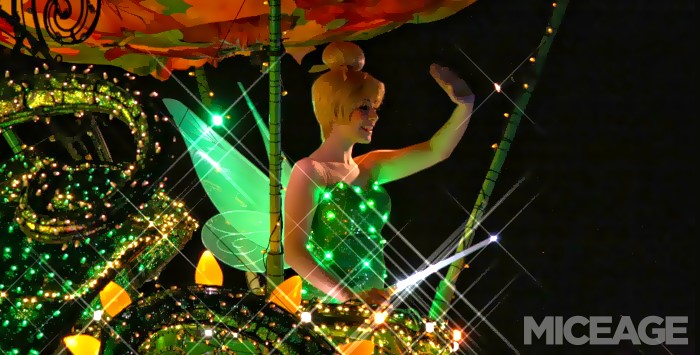
“Disney magic” is more than just rides.
Scenario #3
While the second scenario roughly provides a status quo, I think it’s possible to imagine a third scenario that actually improves upon the ride-reservation landscape we have currently. What if they further played with the mix formula? Scenario #1 assumed 0% Standby and Scenario #2 assumed a continuation of today’s 30% Standby (I should have mentioned earlier that 30% is not a monolithic number; each ride is different). But the changing of the system offers the chance to shake this up. What if they went to a full 50% Standby? It may sound counter-intuitive to offer FEWER reservation slots, but I think on the whole this may yield the greatest amount of happiness. Consider:
- Ultra-planners will still get what they want. There are even fewer AFPs in this scenario, but these are the ultra-planners, who live and die by competition anyway.
- Non-planners will actually improve their lot. With even more Standby slots available, the standby lines will move faster.
- Locals will find their situation slightly less welcome than today’s world, but still within tolerances. They can wait in faster-moving Standby lines, or they can make an AFP if they really want to ride an E-Ticket. They are unlikely to get same-day FP, however.
That’s the sweet spot I fervently hope they aim at. Less is more, as odd as it sounds. And this system will still hit those problem statements Staggs talked about: if you want to make sure you hit the ‘big’ ride of your dreams, you either make a very early AFP or you wait in a fast-moving Standby line.
Of course, having spilled a lot of digital ink about this subject, I feel a bit sheepish about pointing out that the entire discussion could have been avoided. Staggs’ solution to the original problem statement, if you ask me, is wrong-headed to begin with. If your problem is long lines (and really, the fear of missing Splash Mountain is just a byproduct of long lines), then the solution is not to get rid of the concept of queues. The solution is to increase capacity of the park as a whole.
It doesn’t take complicated math to imagine how the numbers would change with the addition of more rides. If you build five more rides that can put 2,000 people per hour through the attraction, you’ve taken 10,000 people off the street and dramatically reduced the waits on the existing attractions. Don’t tell me the parks don’t have the space to expand. Even cramped DHS can demolish a tram ride or car show to make room for five people-eating attractions. Taking people off the street ought to be a priority, anyway. FP took folks out of themed queues and clogged walkways already; AFP promises to do even more of that (unless they reduce the FP/AFP effect by awarding more slots to fast-moving Standby lines).
Sure, it would cost a lot of money to build five attractions at each of the four parks. But remember what Staggs said—they are spending $1 billion on NextGen. A billion dollars spread out among twenty attractions is fifty million each. You couldn’t get twenty new rides like Carsland, but you could get twenty decent, well-themed rides for fifty million each. Or save a few million on a couple rides and recoup that money on a big E-Ticket for each park. Besides, it’s the new rides which drive vacation planning across the country. Will a family in Wyoming really hear about AFP and decide that’s a compelling reason to book when they are already used to getting same-day FPs?
The villain, oddly, is the quest for efficiency. You’d think that efficiency would be a good thing, and maximizing efficiency would do the most to reduce wait times. That may have been the original goal, but that kind of thinking doesn’t take into account the practical results of a drive for efficiency. Let’s mentally travel back to 1993, say, and look at Big Thunder Mountain Railroad.
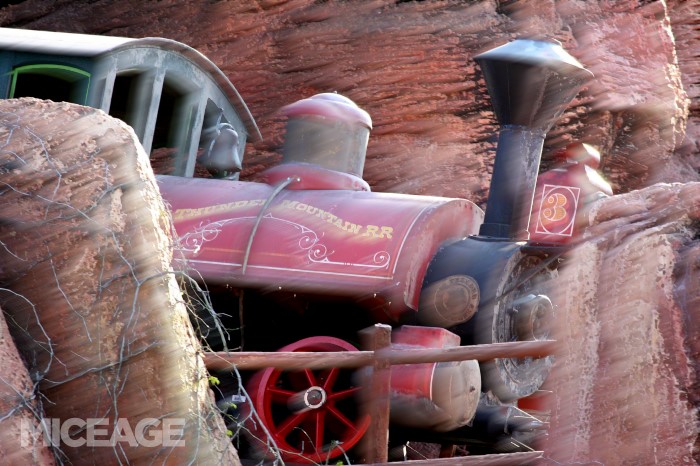
Still a great ride.
It’s 4pm on a Saturday, and they are running five trains. At times during our sixty-minute observation, the line swells to fifteen or twenty minutes, but it also wanes down to ten minutes sometimes. Fast-forward to today. In its quest for efficiency, the modern-day Disney has charted historical data like this and crunched a ton of numbers, and they might decide that sometimes four trains do the job “well enough” and there is no need for the fifth train. Lines are no longer 15 minutes, though. The efficiency experts care that every spot in every train is filled, and that the company isn’t spending more than it has to. So lines might now be forty minutes. From the point of view of “efficiency,” this is just fine—there’s little danger now that a train will be dispatched with an empty row. If you think about it, efficiency in this sense is actually counter to the vision of customer service. It reduces the customers to numbers and treats them like widgets on an assembly line.
Sadly, there’s an entire department dedicated to this kind of efficiency, and by and large they call the shots. The real problem is this mentality of efficiency. Disney seems to have lost sight of the fact that operating costs are supposed to be sunk costs, necessary expenditures to keep the customers happy who have already paid to be here. In trying to reduce operating costs, they aren’t really addressing the core problem of making the customer happy.
Until they address that mentality, any attempt to finesse the customer experience and expectations via ride reservations will be a matter of “treating symptoms;” (a Band-Aid solution) rather than addressing the underlying disease. |
